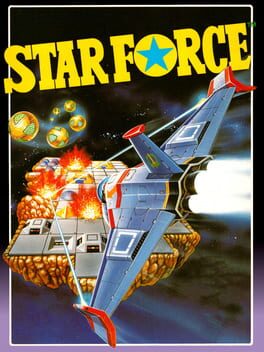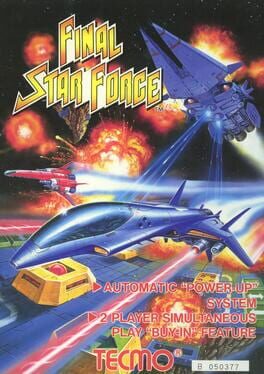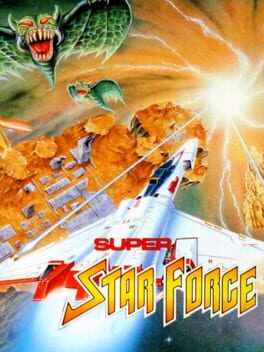

In the game, the player pilots a starship called the Final Star, while shooting various enemies and destroying enemy structures for points. Unlike later vertical scrolling shooters, like Toaplan's Twin Cobra, the Final Star had only two levels of weapon power, and no secondary weapons like missiles and/or bombs. Each stage in the game was named after a letter of the Greek alphabet. In certain versions of the game, there is an additional level called "Infinity" (represented by the infinity symbol) which occurs after Omega, after which the game repeats indefinitely.
Also in series
Reviews View More
Take control of the Final Star and fight through twenty-four levels each named after the Greek alphabet in order to destroy the alien planet of Gordess. The Final Star allows you to double up on ships to take on extra fire power in order to efficiently shoot through the healthy variety of enemy patterns. After completing the first twenty-four areas the game will loop indefinitely.
First released in 1984, Star Force is one of the early shoot'em ups that have not yet followed the trend initiated by Xevious (1982), thus maintaining a very minimalist approach in its gameplay. In this regard, the game exemplifies the early days of Tecmo – then still known as Tehkan. The player is in command of a starship, the Final Star, whose goal is to destroy the planet Gordess and its defenders, in a succession of twenty-four levels, each represented by a letter of the Greek alphabet. With few frills, the title only requires the player to shoot down waves of opponents with their lasers. The only upgrade item allows the rate of fire to be increased, but the title does not offer any new weapons or protective features. This somewhat archaic design increases the difficulty of the title, as each projectile can be fatal, but it allows the player to get back into the game reasonably quickly, without suffering a complete setback.
Several issues nevertheless plague the game: firstly, the ad nauseam repetition of enemy waves during twenty-four levels quickly tires, since nothing breaks the monotony of the gameplay loop: the end-level bosses are excessively bland and do not provide any additional challenge. On the other hand, the American port is surprisingly difficult compared to the Japanese version. Indeed, the speed of the enemies has been greatly increased, so that the first stages already have the difficulty of the Japanese mid-game. The screen quickly becomes saturated with projectiles, which are particularly tough to avoid, as all the opponents shoot towards the player. Unlike a bullet hell where the projectiles follow comprehensible patterns, here the player has to avoid shots that come from both the front and the back, with very limited room to manoeuvre. Despite the Final Star's high rate of fire, it is easy for enemies to get through the barrage of shots, quickly making the situation uncontrollable, especially because the starship moves so slowly. These structural problems become particularly critical in the final levels.
Star Force thus struggles to impress, although it is not a particularly bad game: it suffers from a simplistic nature, perhaps too pronounced. This assessment has surely been made by Tecmo, since Super Star Force (1986) complexified the formula, with an emphasis on exploration, in rather unexpected isometric views.
Several issues nevertheless plague the game: firstly, the ad nauseam repetition of enemy waves during twenty-four levels quickly tires, since nothing breaks the monotony of the gameplay loop: the end-level bosses are excessively bland and do not provide any additional challenge. On the other hand, the American port is surprisingly difficult compared to the Japanese version. Indeed, the speed of the enemies has been greatly increased, so that the first stages already have the difficulty of the Japanese mid-game. The screen quickly becomes saturated with projectiles, which are particularly tough to avoid, as all the opponents shoot towards the player. Unlike a bullet hell where the projectiles follow comprehensible patterns, here the player has to avoid shots that come from both the front and the back, with very limited room to manoeuvre. Despite the Final Star's high rate of fire, it is easy for enemies to get through the barrage of shots, quickly making the situation uncontrollable, especially because the starship moves so slowly. These structural problems become particularly critical in the final levels.
Star Force thus struggles to impress, although it is not a particularly bad game: it suffers from a simplistic nature, perhaps too pronounced. This assessment has surely been made by Tecmo, since Super Star Force (1986) complexified the formula, with an emphasis on exploration, in rather unexpected isometric views.


